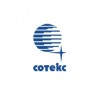Expiration date: 06/2026
Testimony
- acute ischemic stroke (in the complex therapy);
- recovery period of ischemic and hemorrhagic strokes.
- traumatic brain injury, acute (in the complex therapy) and recovery period;
- cognitive and behavioral disorders in degenerative and vascular diseases of the brain.
- ICD-10 codes dosing regimen
- The drug is taken orally, during a meal or between meals.
Before applying Napilap® can be diluted in a small amount of water (100-120 ml or 1/2 Cup).
The acute period of ischemic stroke and traumatic brain injury: administered 1000 mg (10 ml) every 12 hours Duration of treatment for at least 6 weeks.
The recovery period of ischemic and hemorrhagic strokes, the recovery period of traumatic brain injury, cognitive and behavioral disorders in degenerative and vascular diseases of the brain: it is administered 500-2000 mg (5-20 ml)/day. The dose and duration of treatment set depending on the severity of symptoms.
In the appointment of citicoline in elderly patients dose adjustment is not required.
Side effects
Side effects are grouped by frequency of occurrence: very often (>1/10), often (?1/100 to <1/10), infrequently (?1/1000 to <1/100), rare (?1/10, 000 to <1/1000), very rare (<1/10 000) frequency not set.
Very rarely (<1/10 000 (including individual cases)): allergic reaction (rash, itching, anaphylactic shock), headache, dizziness, hot flashes, tremor, nausea, vomiting, diarrhea, hallucinations, edema, shortness of breath, insomnia, agitation, decreased appetite, numbness in the paralyzed limbs, changes in liver enzymes. In some instances citicoline may stimulate the parasympathetic system, as well as to provide short-term changes blood pressure.
If any of the instructions side effects worsen or observed any other side effects not mentioned in the instructions, the patient should inform the doctor.
Contraindications
- hypersensitivity to any component of the drug;
- severe vagotonia (a high tone of parasympathetic part of the autonomic nervous system);
- the age 18 years (insufficient clinical data).
Application of pregnancy and breastfeeding
There is insufficient data on the use of citicoline in pregnant women. During pregnancy, citicoline is prescribed only in cases when the expected benefit to the mother outweighs the potential risk to the fetus.
While applying citicoline lactation women should solve the issue of termination of breastfeeding because data on citicoline excretion in breast milk is not available.
The children
The drug is contraindicated under 18 years (in the absence of sufficient clinical data).
Use in elderly patients
In the appointment of citicoline in elderly patients dose adjustment is not required.
Special instructions
Cold may form a small amount of crystals due to a temporary partial crystallization of the preservative. Upon further storage at recommended conditions, the crystals dissolve within a few months. The presence of crystals does not affect the quality of the drug.
Effects on ability to drive vehicles and management mechanisms
During application of the drug should be careful when driving and occupation of other potentially hazardous activities, require high concentration and psychomotor speed reactions.
Overdose
Given the low toxicity of the drug cases of overdose not described, even in case of excess of therapeutic doses.
Drug interactions
Citicoline enhances the effects of levodopa.
Should not be used in conjunction with medication containing meclofenoxate.




